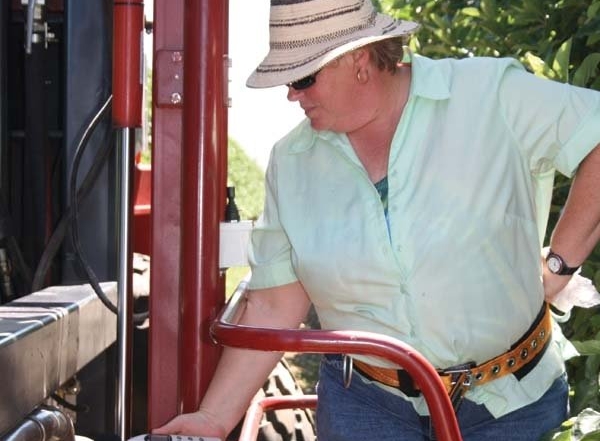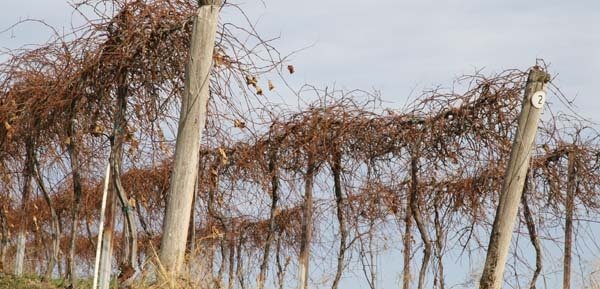Project Description
The Next Decade
Featured stories about the next decade appear in this issue.
Research viewpoint
Soft fruit breeder Ralph Scorza and colleagues developed this pitless plum. Continuing budget constraints at U.S. universities will result in fewer scientists and less research
Cherry Institute looks to the future
As the Pacific Northwest sweet cherry industry moves toward larger crops in the future, it will take the industry working together to achieve success, says
Embracing change
Laura Mrachek works to make a difference in the tree fruit industry. Laura Mrachek, retiring president of the Washington State Horticultural Association, likes change. So,
Field sorting culls
One area of research that John Verbrugge thinks has been overlooked is field sorting of culls. Verbrugge, new president of the Washington State Horticultural Association,
How many is too many?
When it comes to new varieties, John Rice predicts that in the next decade, most retailers will offer five main apple varieties year round—Gala, Fuji,
Should WAC come back?
A rack card developed by CMI tells consumers about the health benefits of eating apples, with a focus on fiber content. If the Washington apple
Produce expert
With an office in Yakima, Washington, Wal-Mart plans to keep prices lower and buy directly from growers, cutting out the middleman, says a former Wal-Mart
Market limitations
How new varieties will coexist with those that have already carved out shelf space is the million-dollar question. The biggest change from a marketer's standpoint
Extension educators
WSU Extension educator Karen Lewis expects to see more technologies used in orchards to augment workers, in addition to platforms. In the future, growers won't
Growing nitrogen on the side
Dr. Steve Fransen points out that the ladino clover had pink root nodules, indicating that it was fixing nitrogen. As commercial nitrogen fertilizers become more
Field sorting could bring a bonus
The recently planted WSU research orchard will allow study of planting designs for the future. One of the new technologies Washington State University entomologist Dr.
Past, present, and future
Chuck Peters designed his new pear orchard with mechanization and new technologies in mind. It might be possible to develop apples with yet-to-be-identified health benefits,
Changes will come faster. Will you keep up?
Agricultural economist Two decades ago, at a time when the industry had yet to produce more than 60 million boxes of apples and Red Delicious
Apple marketing incentive
"If an apple were to explode like a hand grenade when it reached a stage of ripeness not permitting it to reach the consumer in
Identity crisis
The flood of new apple varieties will continue until the consumer is so confused about the Washington apple identity that they might turn to something
Blast from the past
Robots harvesting fruit, scientists creating the perfect apple trees in petri dishes, and a fruit industry run by conglomerates were just some of the changes
Wind of change
"Change is in the wind," an article in the Good Fruit Grower declared in 1987, which was a year of milestones for the Washington tree
Allow parasites to control leafhopper
A decade ago, the western grape leafhopper was known to exist in British Columbia only on the east side of the Okanagan Valley, from Penticton
Growers foresee change
There are too many new apple varieties, says Polish orchardist Krzysztof Hermanowicz. New market niches, more emphasis on eating quality, technological advances in the orchard,
Sorting technology
Tree fruit packers believe that future technology will improve labor efficiencies while improving fruit quality New technology will touch all areas of tree fruit production
Exotic varieties, new regions
Washington's wine industry could double in size within the next decade, predict industry members.
Nursery perspective
These finished nursery trees will soon be harvested and prepared for later planting by growers. With the proliferation of new tree fruit varieties released in
Video touts fruit industry jobs
Jobs in the tree fruit industry aren't limited to the obvious ones of picking or packing fruit. That's the message conveyed in a new video
GRAS2P: Not another audit program
Susan Pheasant Tesco Nature's Choice, British Retail Consortium, Safe Quality Food 1000 and 2000, U.S. Department of Agriculture GAP, Costco, Food Alliance, GlobalGAP, Primus, Protected
Audit harmony
A group of around 50 produce industry leaders are working on an effort to harmonize the various food-safety standards and audits that exist today and
Last Bite – The Land of the Yakamas
Cowin paid careful attention to marketing, and his high-quality fruit stood out in the marketplace. In 1909-1910, Earle Cowin earned the distinction of being one
Ready for change
As the new president, John Verbrugge will lead Washington's Horticultural Association into more involvement with state regulatory issues. New Hort President John Verbrugge represents a
Good Point – Jim McFerson
Predictions and promises are easy enough, as long as they're vague. On the other hand, few people really remember the predictions, so why not take
Cold-friendly varieties
Last winter's cold damage has helped researchers and grape growers identify varieties that are best suited to British Columbia's Okanagan Valley. Working with a handful
Surviving the cold
These grapevines await their winter pruning. Mechanically pruning vines that have severe bud damage from cold may be a cost-effective option, says Vincor's Frank Hellwig.
Australia’s water crisis forces changes
Dealing with rising temperatures may be a conundrum for fruit growers confronting climate change, but in Australia it's been complicated by widespread drought since 2003.
Invite the whole community
Mason bee nests in the orchard of Robert Schreiber at Poysdorf, Austria, pictured during an International Fruit Tree Association tour Growers should think not about
Cultivating beneficials
Mike Omeg checks for beneficial insects in goldenrod plants in an insectary alongside a Regina cherry block. He's watched by (from left) Drew Merritt and
Cover crops and pest control
Does attracting natural enemies to an orchard by planting a cover crop translate to better biological control of pests in the trees? Dr. David Horton,






















